
Portuguese Proteomics Network
Rede Proteómica Portuguesa
![]() Home
Home![]() Missions
Missions![]() Network Profle
Network Profle![]() People
People![]() Research Projects of Laboratory Members
Research Projects of Laboratory Members![]() Proteomics
Proteomics![]() 20 Gel Database
20 Gel Database![]() 20 Protocols
20 Protocols![]() DIsCussIon Forum
DIsCussIon Forum![]() News
News![]() Updated
Updated![]() Job Offers
Job Offers![]() LInKs
LInKs![]() Sponsorship
Sponsorship![]() Membership
Membership![]() Contact Us
Contact Us

Cystic Fibrosis by Proteomics
Study of the human ß-globin mRNA
Determination of Dental Caries Associated Factors
Comprehensive Proteomic Analysis of TTR induced Proteins in hepatomas
Cystic Fibrosis by Proteomics

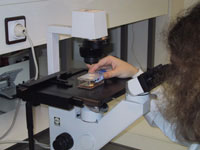
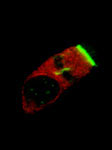
Despite of the rapid advances in our understanding of the molecular determinants of Cystic Fibrosis (CF), over the last decade since the gene clone, CF remains one of the most common lethal recessive disorders in Caucasians worldwide. The function of CF gene product (CFTR- CF transmenbrane conductance regulator), as a Cl- channel has been extensively studied. However, the cellular abnormalities that link the CF genotype to the cell/tissue phenotype of CF are not completely understood. Indeed, several additional cellular abnormalities to defective Cl- transport have been described in CF cells/tissues, being some of them probably associated to other putative functions of CFTR.
By functional proteomics, an integrative picture of CF cellular alterations versus non-CF could be addressed. This project intends to map proteins potentially related to the pathogenic CF phenotype. This will contribute to new insights to the identification of molecular targets to design new therapeutic strategies for CF.
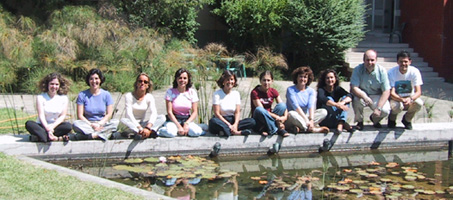
Project Responsibles
Deborah Penque, PhD: Assistant Researcher, Centro de Genética Humana, Instituto Nacional de Saúde Dr. Ricardo Jorge (Lisboa).
Margarida Amaral, PhD: Assistant Professor, Departamento de Química e Bioquímica, Faculdade de Ciências – Universidade de Lisboa, and Invited Researcher, Centro de Genética Humana, Instituto Nacional de Saúde Dr. Ricardo Jorge (Lisboa).
Study of the human ß-globin mRNA nonsense-mediated decay mechanism
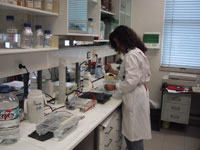
Accurate gene function depends on a low error rate of each step of the gene expression pathway. The fidelity of gene expression is enhanced further by a quality control mechanism against faulty mRNAs with premature translation termination codons, which has been termed nonsense-mediated mRNA decay (NMD). After the phenomenon of NMD was first described in a patient with ß-thalassemia, the human ß-globin gene has been central in elucidating the mechanism.
The objective of our project is to investigate specific factors involved in targeting a nonsense-mutated human ß-globin mRNA for decay, by functional proteomics. By using two-dimensional polyacrylamide gel electrophoresis, we intend to identify and characterize proteins specifically and differentially expressed in cell lines stably transfected with a normal or a nonsense-mutated human ß-globin gene.
Project Responsible
Luisa Romão, PhD: Assistant Researcher, Centro de Genética Humana, Instituto Instituto Nacional de Saúde Dr. Ricardo Jorge (Lisboa).
Determination of Dental Caries Associated Factors Using Proteomics Methodologies
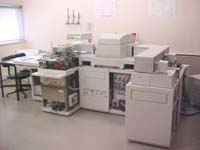
Objectives:
– to determine saliva protein patterns associated with dental caries using proteomics
– to establish new therapeutic strategies to dental caries.
Dental caries is a multifactorial chronic disease that involves the destruction of tooth structure, which can lead to loss of masticatory function and unesthetic appearance of affected teeth. More than 80% of mankind suffers dental caries disease. Among the host factors that affect dental caries, perhaps the most obvious is saliva, with an important role in the maintenance of health of both soft and hard oral tissues.
The aim of this study is to investigate saliva protein profiles and their probable association with caries activity. Two groups of subjects have been selected by their caries status: caries free, and caries active and the 1D and 2D SDS-PAGE electropherograms compared and proteins identified by mass spectrometry.
Project Responsibles
Francisco Amado, PhD: Assistant Professor, Departamento de Química, Universidade de Aveiro (Aveiro).
Pedro Domingues, PhD: Assistant Professor, Departamento de Química, Universidade de Aveiro (Aveiro).
Comprehensive Proteomic Analysis of TTR induced Proteins in hepatomas
Familial Amyloidotic Polyneuropathy (FAP) is characterized by deposits of insoluble amyloid fibres in which transthyretin (TTR) is the major protein component. TTR is a tetramer with identical 127 aminoacid sub-units and an extensive ß-sheet structure. More than 80 TTR mutations have been associated with autosomal dominant amyloidosis, usually presenting with peripheral and autonomic neuropathy and/or cardiomyopathy.
With this study we aim to identify and characterise novel proteins implicated in the metabolism of TTR.
A comparative 2D analysis methodology is being used to identify proteins that are differentially expressed in hepatomas in the presence and absence of TTR.
Project Responsible:
Maria João Saraiva, PhD, Departamento de Neurobiologia Molecular, IBMC, Porto.